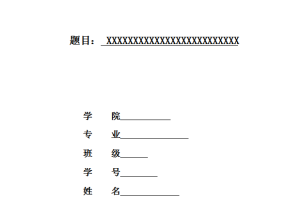目 录
一、我国零售企业库存管理的现状………………………………. 1
(一)零售企业库存管理的内容………………………………………………………………………………… 1
(二)零售企业物流的特点………………………………………………………………………………………. 1
1、品种多、批量少、频率高………………………………………………………………………………. 1
2、全国性统一采购和配送难以实现…………………………………………………………………….. 2
3、小规模供应商为主,全国性的供应商少……………………………………………………………. 2
(三) 零售企业库存管理模式…………………………………………………………………………………. 2
1、传统的库存管理模式…………………………………………………………………………………….. 2
2、现代的库存管理模式…………………………………………………………………………………….. 2
二、零售企业普遍存在的问题………………………………………………………………………………… 3
(一) 缺货现象严重……………………………………………………………………………………………… 4
(二) 门店库存积压严重……………………………………………………………………………………….. 4
(三) 周转天数过多……………………………………………………………………………………………… 4
(四) 零售企业与供应商缺乏协调与合作………………………………………………………………….. 5
(一)加强畅销商品的缺货管理………………………………………………………………………………… 5
1、门店内部缺货控管……………………………………………………………………………………….. 5
(二) 与供应商共同管理缺货…………………………………………………………………………………. 6
1、 集中订货,减少供应商送货成本……………………………………………………………………. 6
2、 与供应商保持密切联系………………………………………………………………………………… 6
(三)库存管理的有力保证是科学订货………………………………………………………………………. 6
零售企业库存管理的现状与对策
摘要: 随着社会生产的不断发展和进步,人们的需求越来越多样化。最早的大规模流水线生产已不再符合大多数产品的需求,一成不变的产品供应也逐渐淡出了市场。对于任何企业而言,规模生产可以带来效率的提高和生产成本的降低,如何进行零售企业内部的库存管理却是一个难题。零售企业为了减少供应与需求市场的不确定性所带来的损失,不得不考虑设置库存,然而从库存的两面性可知,如果库存管理不当,不但不能减少不确定性损失,就会引起高原材料和成品库存的积压严重,并且占用流动资金,库存周转天数增多,信息不对称现象加重,最后背负市场转型的风险,反而增加零售企业的负担,导致企业的竞争力下降。
关键词:零售企业 库存管理 存在问题 策略
Abstract:with the constant development and progress of social production, people’s demand for more diverse. The earliest large-scale flow line production is no longer compatible with the ma天恒商贸零售ority of product demand, immutable and frozen products also gradually fade out of the market. For any enterprise, the scale of production can bring about efficiency and reduce the production cost, how to carry out the retail enterprise inventory management is a problem. Retail enterprises in order to reduce the supply and demand market uncertainties brought loss, have to consider the set inventory, however from the inventory of two sides that, if the inventory management is undeserved, not only can reduce the uncertainty of loss, will cause the plateau materials and finished goods inventory backlog of serious, and occupation liquidity, inventory turnover increase, information asymmetry aggravating, finally bear market transition risk, but increased retail businesses, leading to decline in the competitiveness of enterprises.
Key words: Retail Enterprise Inventory Management Problems Strategies





